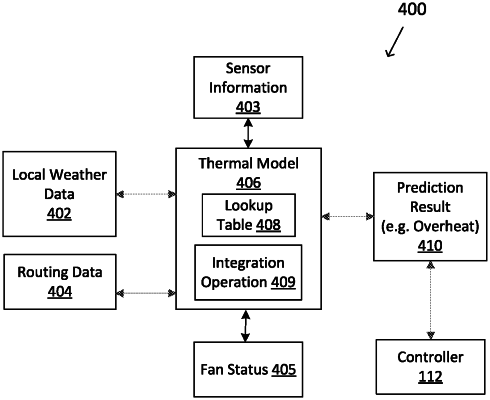| CPC B60W 60/0016 (2020.02) [B60W 30/06 (2013.01); G01W 1/04 (2013.01); B60W 2420/42 (2013.01); B60W 2420/52 (2013.01); B60W 2555/20 (2020.02); G05D 2201/0213 (2013.01)] | 20 Claims |

|
1. A computer-implemented method comprising:
receiving, by a computing system on an autonomous vehicle, local weather data and routing data of the autonomous vehicle, the autonomous vehicle comprising a sensor platform mounted on the autonomous vehicle, wherein the routing data includes a planned route for the autonomous vehicle to navigate;
based on the local weather data and the routing data, predicting, by the computing system using a thermal model and based on one or more lookup tables, a thermal loading and a temperature of at least one component of the sensor platform at one or more future times during an operation of the autonomous vehicle, wherein the one or more lookup tables include, for components of the sensor platform, at least one of thermal heating power and thermal cooling power corresponding to one or more speeds of the autonomous vehicle in one or more environment conditions outside the autonomous vehicle;
sending an overheating warning to a controller of the autonomous vehicle based on a determination that the thermal loading or the temperature of the at least one component exceeds a threshold, wherein the overheating warning includes an estimated amount of time before a predicted overheating of the at least one component of the sensor platform occurs; and
adjusting the operation of the autonomous vehicle to adjust the planned route of the autonomous vehicle based on the overheating warning prior to the predicted overheating of the at least one component of the sensor platform.
|